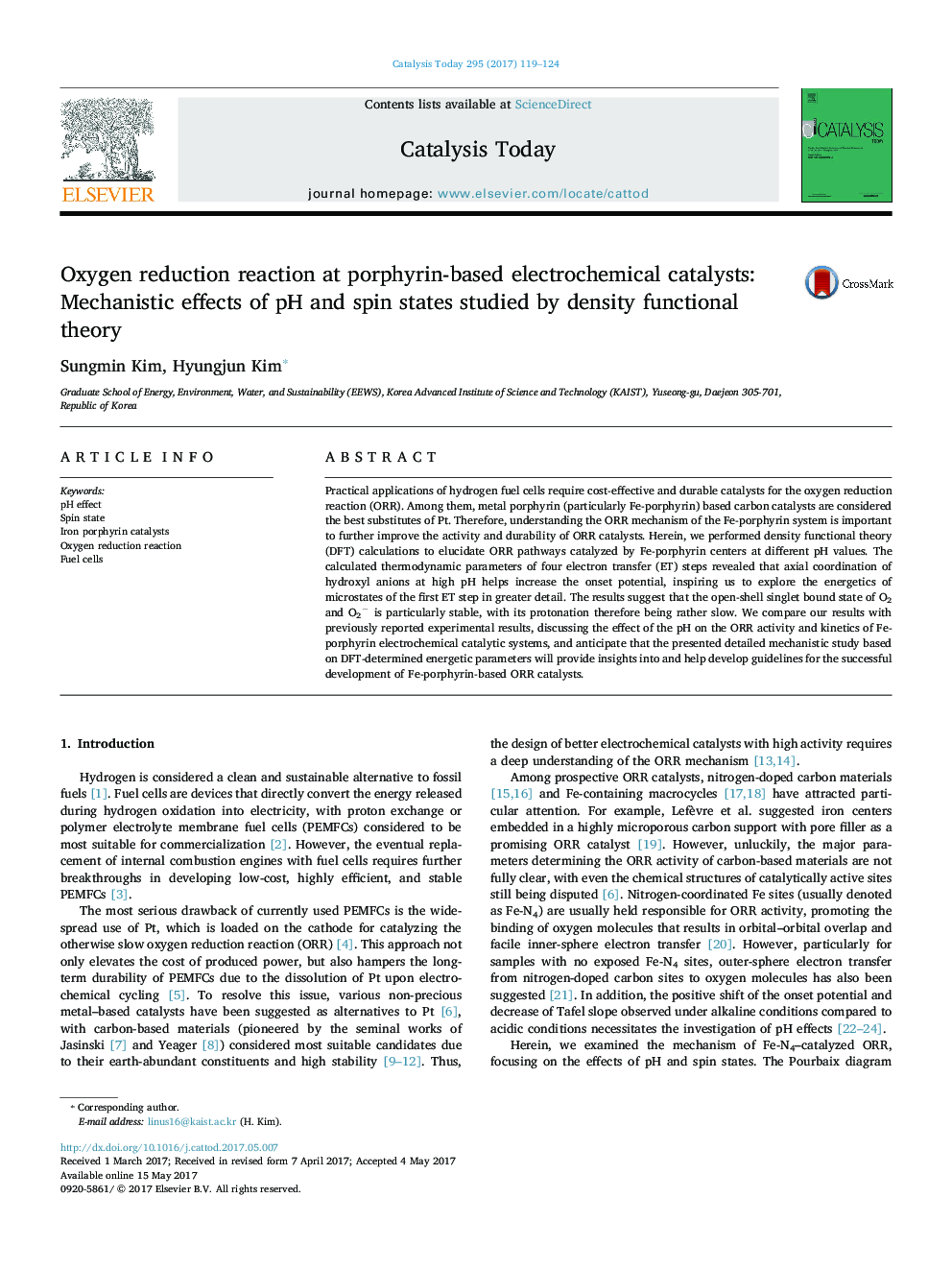| Article ID | Journal | Published Year | Pages | File Type |
|---|---|---|---|---|
| 6455227 | Catalysis Today | 2017 | 6 Pages |
â¢Theoretical Pourbaix diagram shows the active site change with pH conditions.â¢Axial OHâ coordination lowers the overpotential under alkaline conditions.â¢Spin state change and its effect on the ORR energetics are carefully considered.â¢From microstate energetics, the kinetics of each elementary step is discussed.â¢Our results explain the experimental on-set potential and Tafel slope changes.
Practical applications of hydrogen fuel cells require cost-effective and durable catalysts for the oxygen reduction reaction (ORR). Among them, metal porphyrin (particularly Fe-porphyrin) based carbon catalysts are considered the best substitutes of Pt. Therefore, understanding the ORR mechanism of the Fe-porphyrin system is important to further improve the activity and durability of ORR catalysts. Herein, we performed density functional theory (DFT) calculations to elucidate ORR pathways catalyzed by Fe-porphyrin centers at different pH values. The calculated thermodynamic parameters of four electron transfer (ET) steps revealed that axial coordination of hydroxyl anions at high pH helps increase the onset potential, inspiring us to explore the energetics of microstates of the first ET step in greater detail. The results suggest that the open-shell singlet bound state of O2 and O2â is particularly stable, with its protonation therefore being rather slow. We compare our results with previously reported experimental results, discussing the effect of the pH on the ORR activity and kinetics of Fe-porphyrin electrochemical catalytic systems, and anticipate that the presented detailed mechanistic study based on DFT-determined energetic parameters will provide insights into and help develop guidelines for the successful development of Fe-porphyrin-based ORR catalysts.
Graphical abstractDownload high-res image (98KB)Download full-size image
